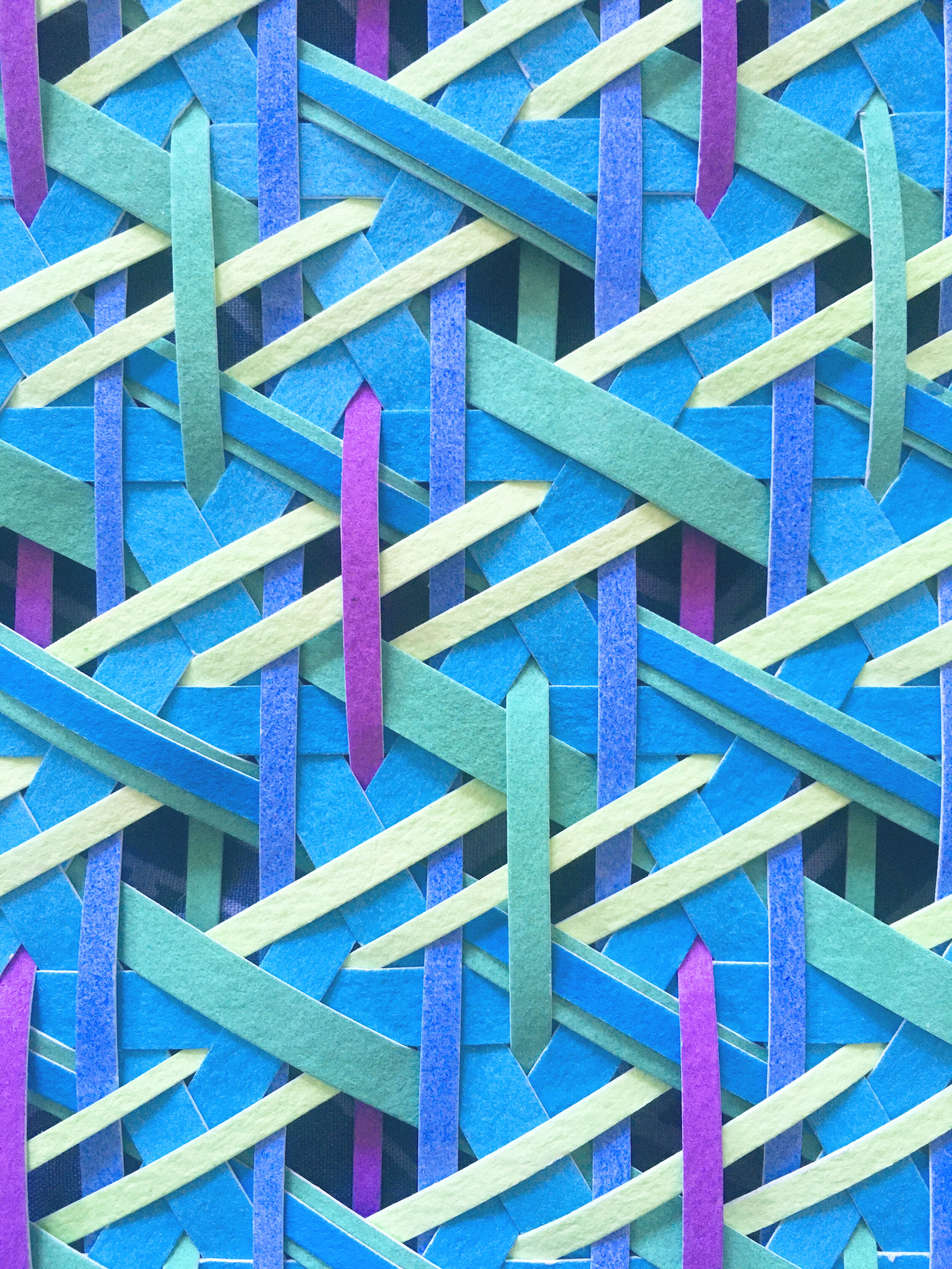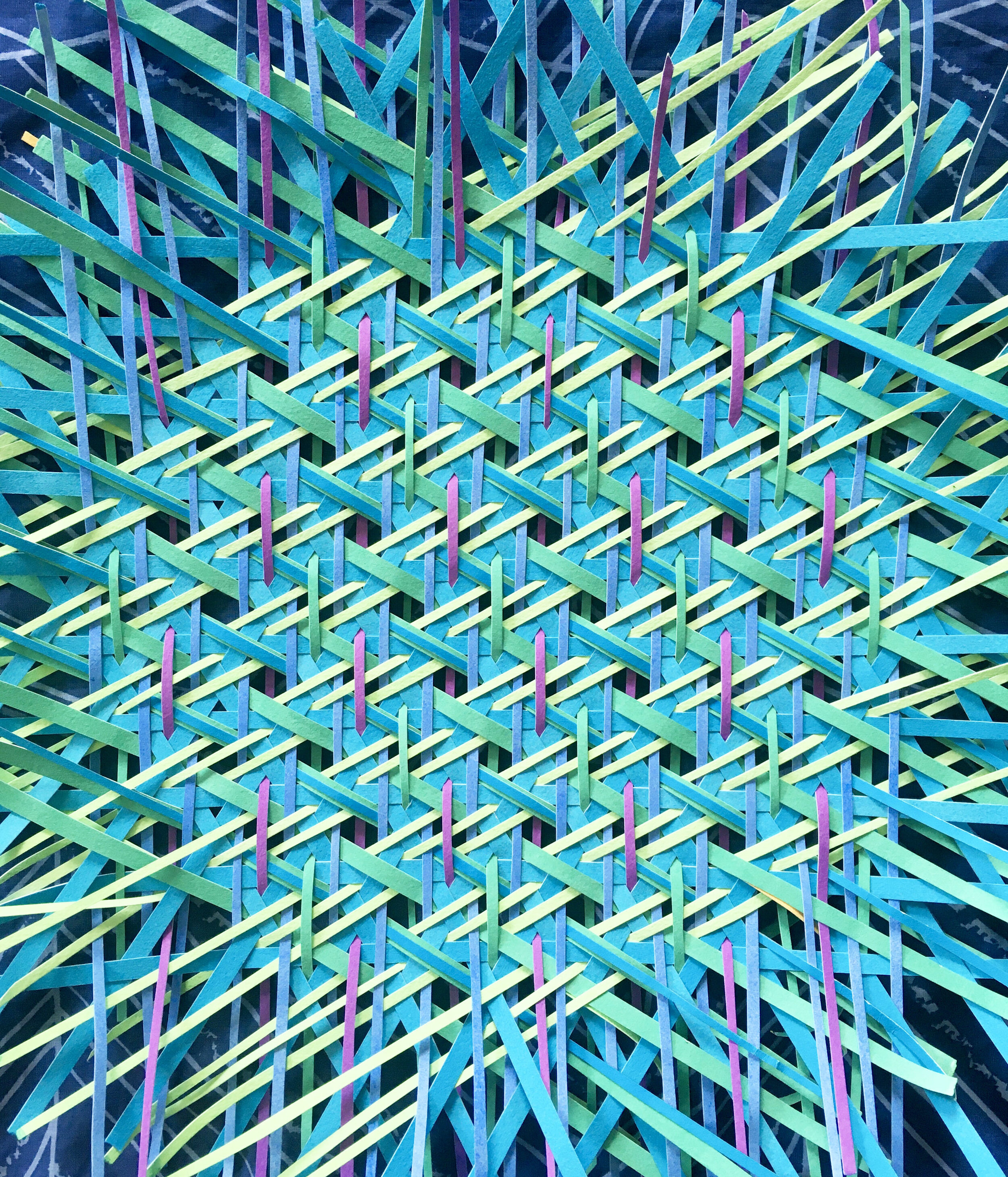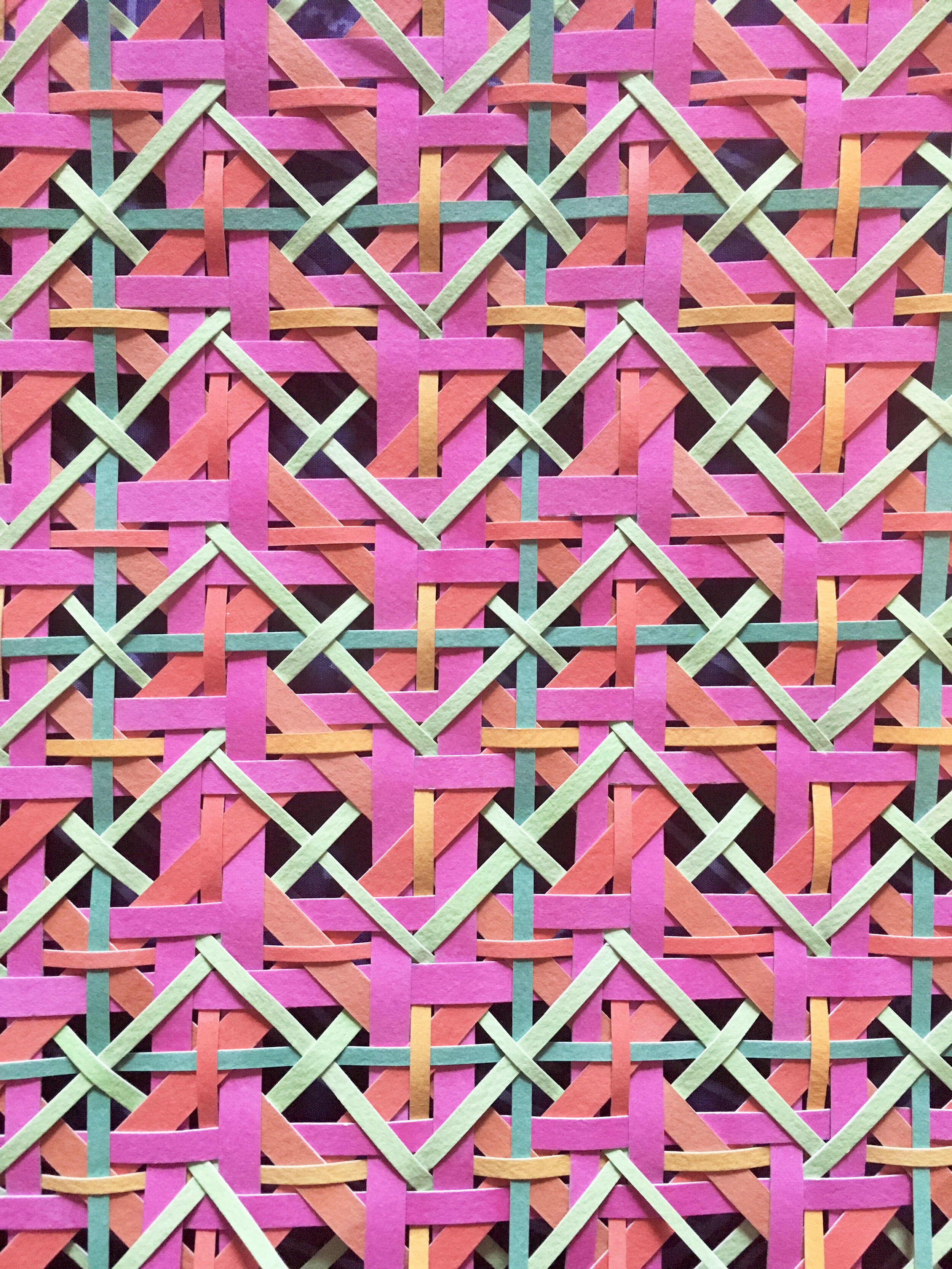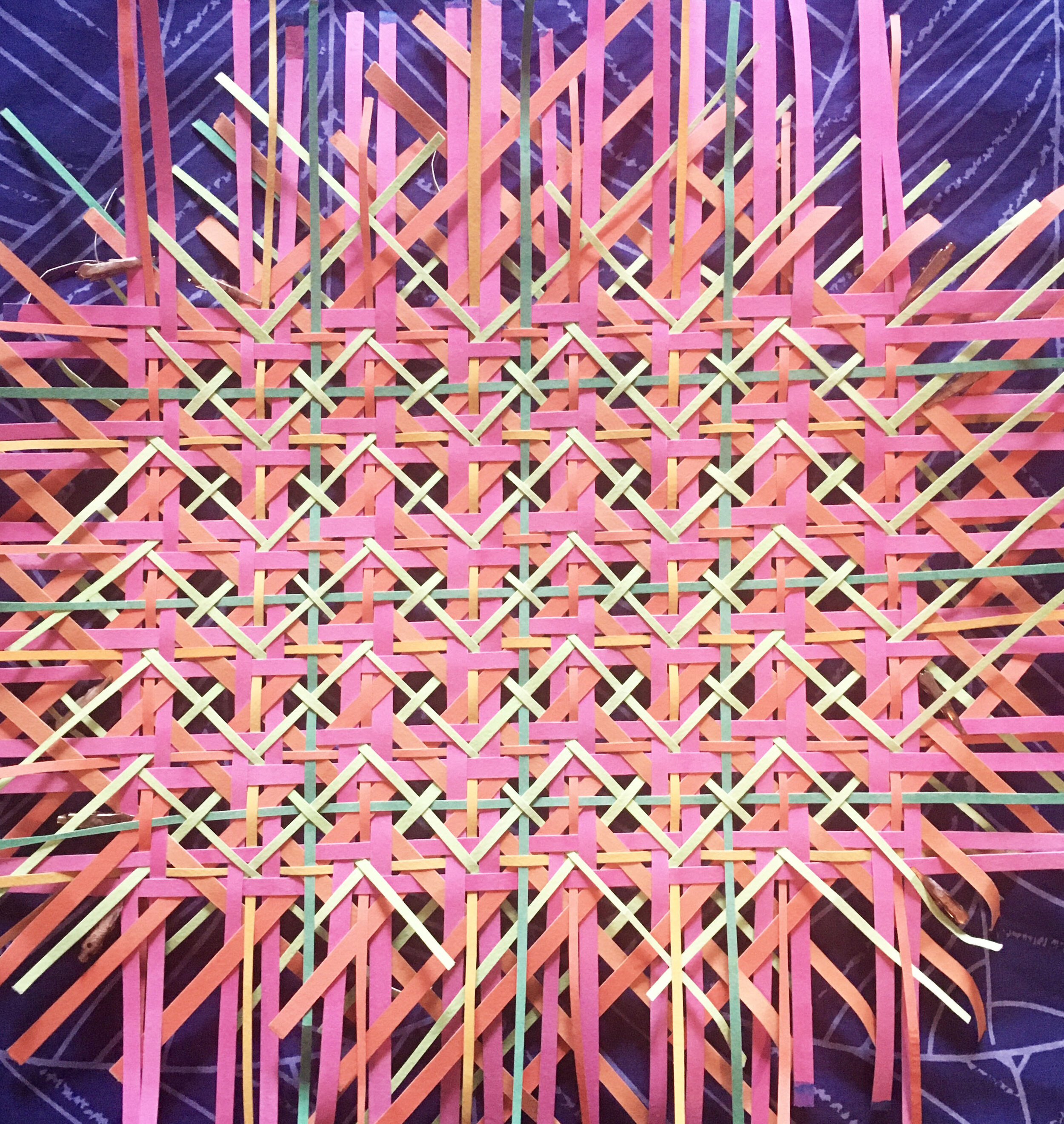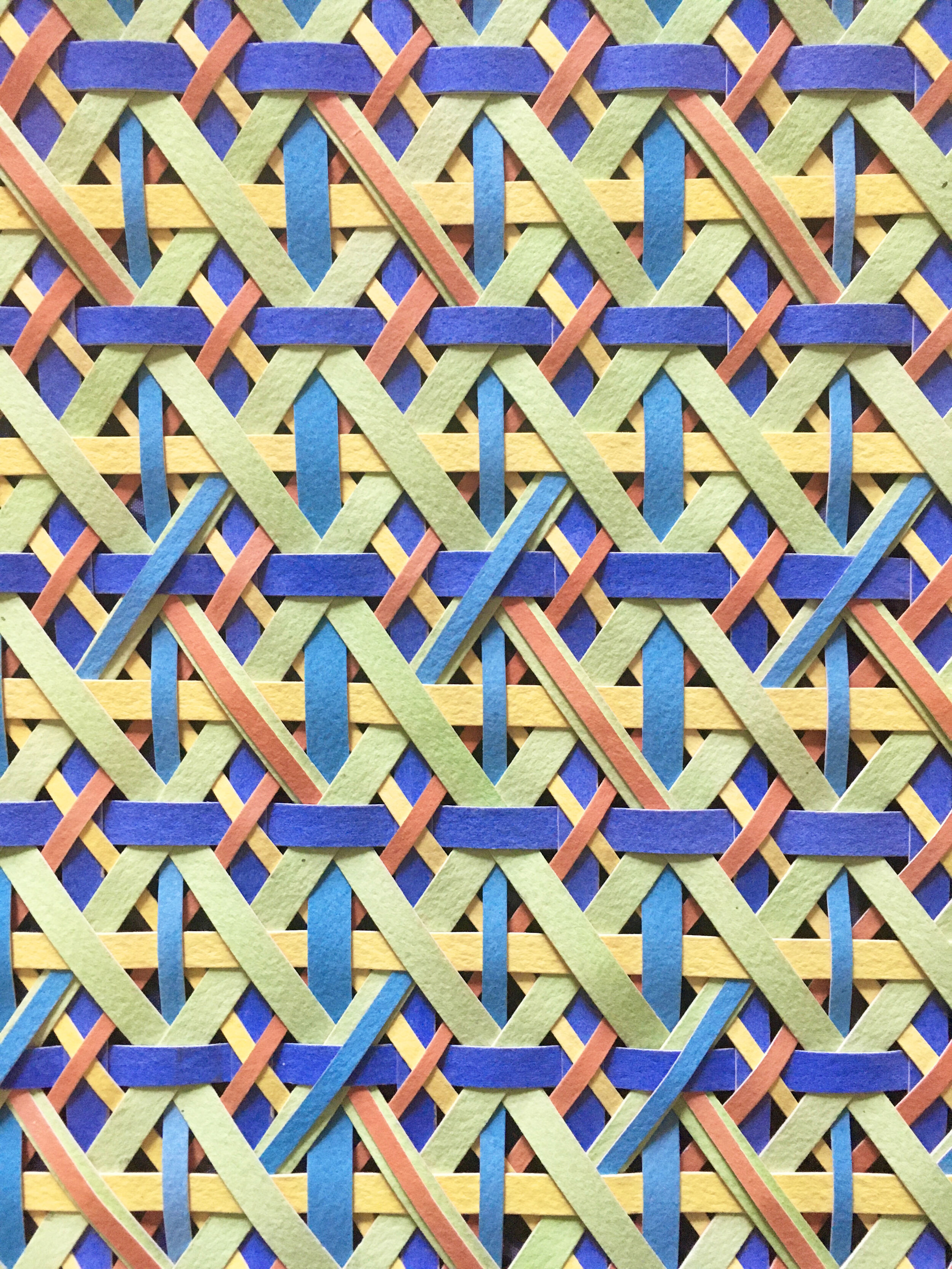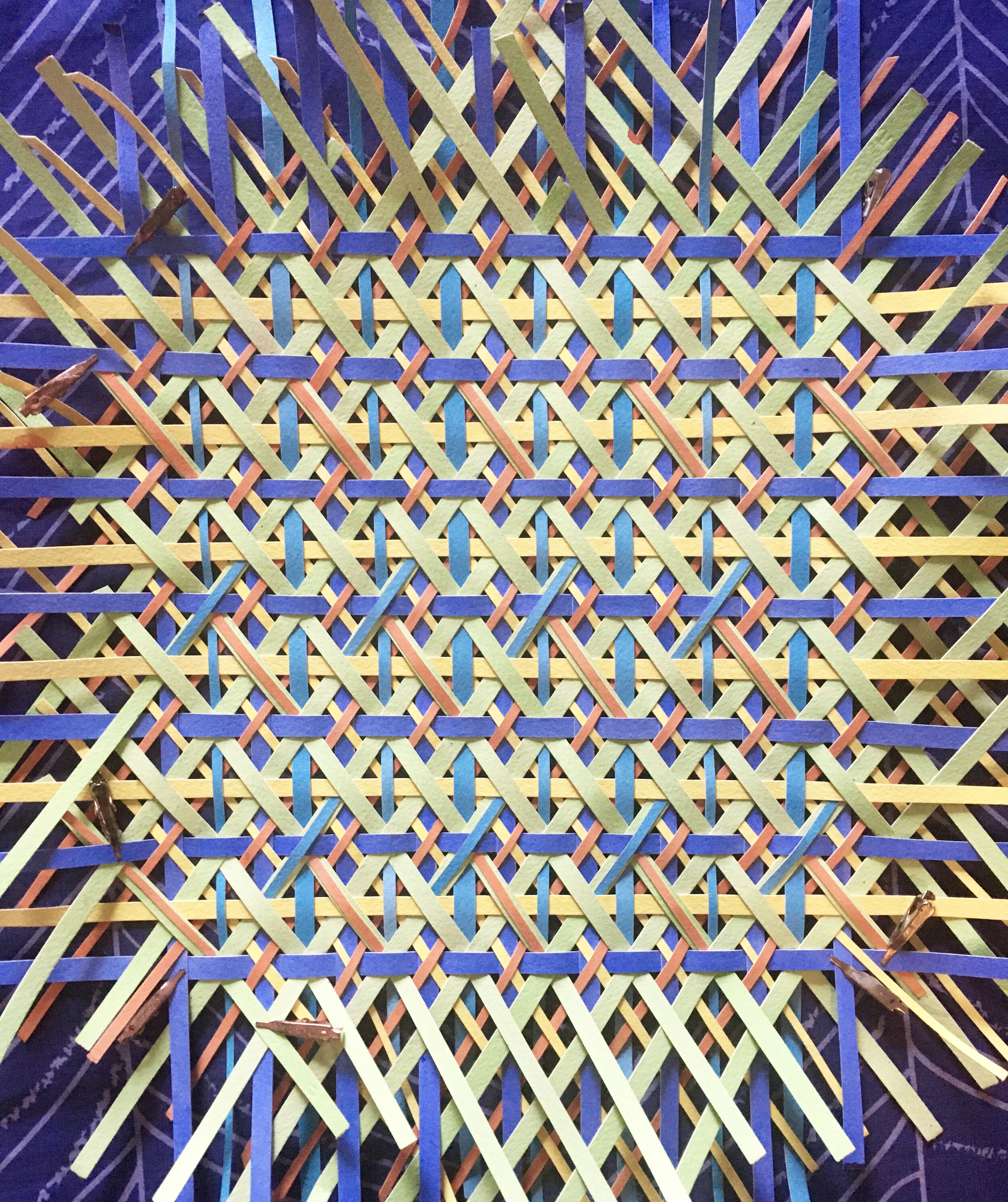In her regular studio, Nathalie Miebach explores the intersection of art and science by translating scientific data related to meteorology, ecology and oceanography into woven sculptures and musical scores and installations. Since the Covid-19 crisis hit, Miebach has been working from home, focusing on learning new weaving skills and thinking about ways she can continue her studio practice post-pandemic.
For more information, please see: http://www.nathaliemiebach.com and on Instagram @miebachsculpture.
Nathalie Miebach, Pattern 1, 2020. Paper. Image courtesy of the artist.
First, and most importantly, how are you doing? How are you navigating the highs and lows?
On good days, I get lost in my studio work and I don’t even notice time passing. I feel optimistic and see this pandemic as an opportunity to retool my studio business and try things I’ve always wanted to do. On bad days, I can’t seem to put the phone down as I get sucked into the news. I worry about my parents, my loved ones and friends.
Nathalie Miebach, Pattern 2, 2020. (Detail). Paper. Image courtesy of the artist.
It's my experience that most artists engage with some level of self-isolation in their day to day art practice. Has this been your experience? And if so, have you found these innate rhythms to be helpful during this larger, world-wide experience of isolation?
It’s true that before the pandemic, I would spent 10 plus hours every day in the studio by myself. But I never felt by myself, because my work was all around me. Since the pandemic, I have not been able to go to my studio and have been working in my apartment. It’s been much harder to work because I don’t have the companionship of all my sculptures and unfinished pieces around me. Working in the apartment, it’s a lot harder to find that creative solitude that seems to come so easily in my studio. Since both my husband and I teach, we are constantly having to Zoom. This digital intrusion, while it does connect you to others, has made the apartment feel at times more like the office.
Nathalie Miebach, Pattern 3, 2020. (Detail). Paper. Image courtesy of the artist.
It would be great if you could briefly talk us through your practice. Understanding it is integral to appreciating the multivalence of your work.
I have been translating science data, specifically weather data, into woven sculptures for nearly 20 years now. My main translation medium is basket weaving, because it gives me a very flexible, 3D grid on which I can translate data on it. I also translate weather data into musical scores and collaborate with musicians and composers all over the country in musical performances. Since the pandemic, I have put all of this on hold because I don’t have access to the tools nor the physical space I need to build these structures. Instead, I have been focusing on expanding my weaving skills and working with whatever materials I happen to have at home.
Nathalie Miebach, Pattern 4, 2020. Paper. Detail and whole pattern. Image courtesy of the artist.
Has any of your imagery shifted in a reflection to what's currently happening? Or are you considering using coronavirus related imagery for future projects? Do you find it necessary to make work about the pandemic? And why, or why not?
People ask me all the time if I am gathering data about the coronavirus and when I will be showing my first pieces. The answer is that I am gathering data, but I am not yet translating it. The crisis is hitting too close to home right now for me to be able to make work about it. I need art to do the opposite right now, which is to give me mental relief for a few hours from the fears and worries it triggers in me about my family and loved ones.
Nathalie Miebach, Pattern 6, 2020. Paper. Detail and whole pattern. Image courtesy of the artist.
Are you thinking differently? Coping differently? Inspired differently?
I spent a lot of time, maybe too much time, thinking about how my studio practice will have to change. I try to envision all these different ways I can retool and what I need to do to target different markets. I have been talking to lots of artists and designers about how they are trying to adjust to this. This has forced me to think outside the fine arts box and see new applications of my skills in more commercial design fields.
Nathalie Miebach, Pattern 7, 2020. (Detail). Paper. Image courtesy of the artist.
What do you think or hope will be different after this crisis has passed?
As depressing and anxiety filled as this moment is, it is also an incredible global expression of love. We are staying home and wearing face masks to not only protect ourselves but our neighbors and community. I know not everyone agrees with me on that. I hope that we don’t forget that this crisis has also revealed some beautiful aspects of our humanity. It is my hope that the Climate Change crisis will trigger a similar global response, hopefully with less of an economic price to pay.
Nathalie Miebach, Pattern 8, 2020. Paper. Detail and whole pattern. Image courtesy of the artist.
What is bringing you solace, or even joy, in this moment?
I’ve come to appreciate, once again, the power of my own hands. While I can’t predict the future, I can control what I build with my hands. That feels both comforting and empowering. I love working with materials and techniques I haven’t worked with in over 15 years. Last week I made a simple basket with handles to hold a blanket. I loved building it, holding the object and knowing that right now it has a use.
Nathalie Miebach, Pattern 9, 2020. (Detail). Paper. Image courtesy of the artist.
What research or writing are you doing that you find compelling?
I am researching a lot of traditional basket weaving techniques based on plaiting and the hexagon weave. I’ve been looking at a lot of Japanese bamboo baskets and some traditional Cherokee patterns, which are incredibly beautiful but difficult to weave. I then try to teach myself based on the images. I’ve always loved that about baskets. They will tell you how they are made, but you have to know how to read them. It’s like being a detective.
Nathalie Miebach, Pattern 11, 2020. (Detail). Paper. Image courtesy of the artist.
What are you reading?
Reading is not an escape right now. I read way too much news, which is necessary but incredibly exhausting.
How are you physically?
I’m still healthy and so is my family. I can’t ask for more. It really is the most important thing right now.
Nathalie Miebach, Pattern 12, 2020. (Detail). Paper. Image courtesy of the artist.




